I had a similar problem, and found a simple heuristic solution shared below. I find plateaus as ranges of constant gradient of the signal. You could change the code to also check that the gradient is (close to) 0.
I apply a moving average (uniform_filter_1d) to filter out noise. Also, I calculate the first and second derivative of the signal numerically, so I'm not sure it matches the requirement of efficiency. But it worked perfectly for my signal and might be a good starting point for others.
def find_plateaus(F, min_length=200, tolerance = 0.75, smoothing=25):
'''
Finds plateaus of signal using second derivative of F.
Parameters
----------
F : Signal.
min_length: Minimum length of plateau.
tolerance: Number between 0 and 1 indicating how tolerant
the requirement of constant slope of the plateau is.
smoothing: Size of uniform filter 1D applied to F and its derivatives.
Returns
-------
plateaus: array of plateau left and right edges pairs
dF: (smoothed) derivative of F
d2F: (smoothed) Second Derivative of F
'''
import numpy as np
from scipy.ndimage.filters import uniform_filter1d
# calculate smooth gradients
smoothF = uniform_filter1d(F, size = smoothing)
dF = uniform_filter1d(np.gradient(smoothF),size = smoothing)
d2F = uniform_filter1d(np.gradient(dF),size = smoothing)
def zero_runs(x):
'''
Helper function for finding sequences of 0s in a signal
https://stackoverflow.com/questions/24885092/finding-the-consecutive-zeros-in-a-numpy-array/24892274#24892274
'''
iszero = np.concatenate(([0], np.equal(x, 0).view(np.int8), [0]))
absdiff = np.abs(np.diff(iszero))
ranges = np.where(absdiff == 1)[0].reshape(-1, 2)
return ranges
# Find ranges where second derivative is zero
# Values under eps are assumed to be zero.
eps = np.quantile(abs(d2F),tolerance)
smalld2F = (abs(d2F) <= eps)
# Find repititions in the mask "smalld2F" (i.e. ranges where d2F is constantly zero)
p = zero_runs(np.diff(smalld2F))
# np.diff(p) gives the length of each range found.
# only accept plateaus of min_length
plateaus = p[(np.diff(p) > min_length).flatten()]
return (plateaus, dF, d2F)

